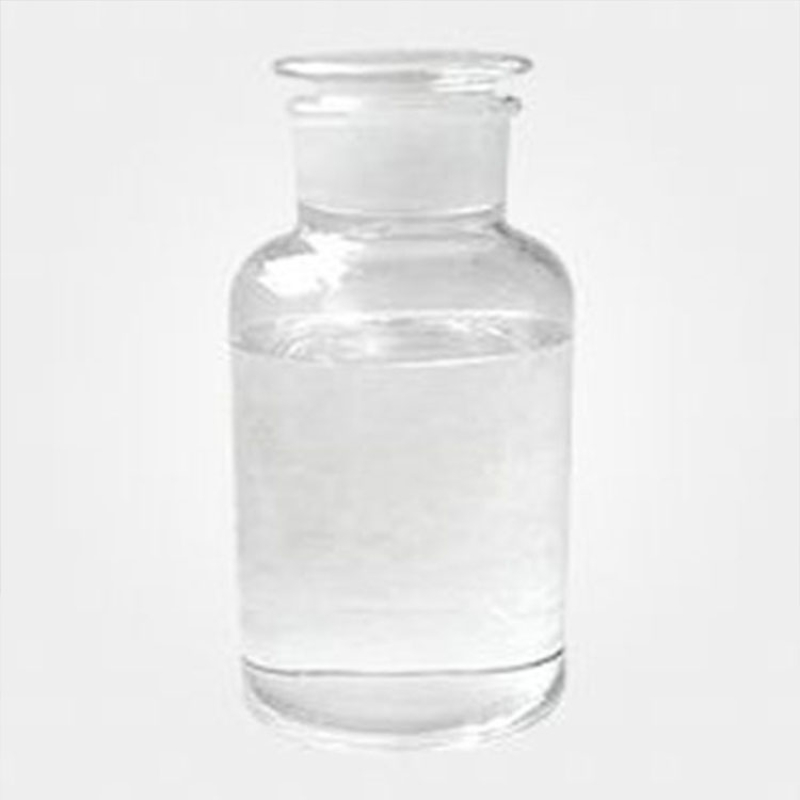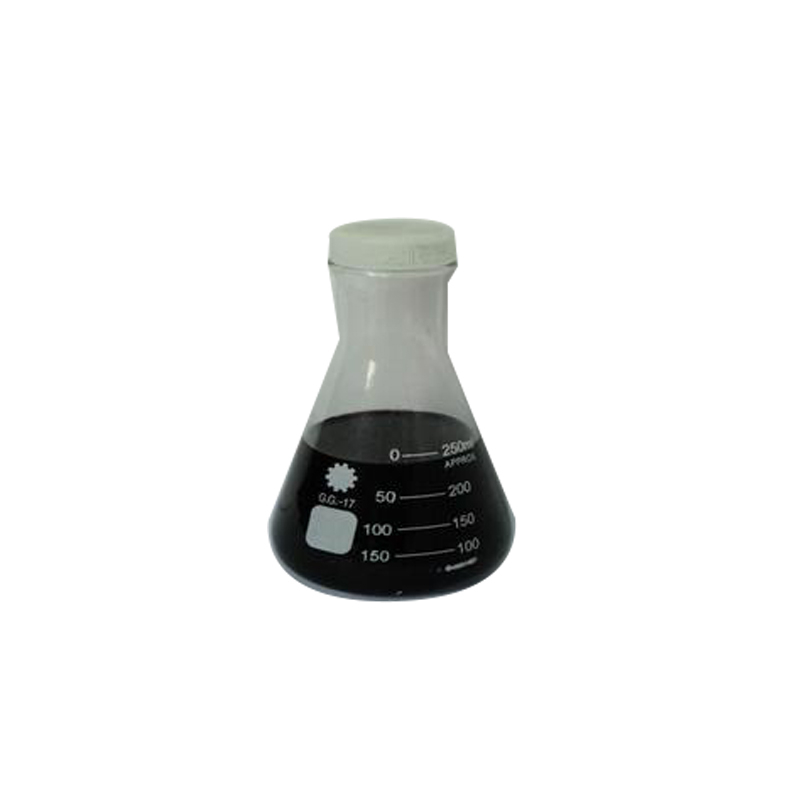Products Description of Octenyl succinic anhydride CAS#26680-54-62-Octenylsuccinic anhydride (OSA) is an important intermediate of fine chemicals. Because its molecule contains carbon-carbon double bonds and carboxylic acid ligands, it has high chemical reactivity. Under appropriate conditions, it can undergo a series of reactions such as addition, substitution, reduction, acetification, hydrolysis and polymerization. It can synthesize a variety of derivatives.
Contact Now
Products Description of Trifluoromethanesulfonic anhydride CAS#358-23-6Trifluoromethanesulfonic anhydride is an organic compound with the chemical formula (CF3SO2)2O.
Contact Now
1,4-Benzenedicarboxylic Acid, Compds. With Polyisobutenyl Succinic Anhydride-Tetraethylenepentamine Reaction Products CAS:68909-40-0Good dispersibility: It can be effectively dispersed in various solvents and matrices, which helps to improve the uniformity and stability of the product. Excellent thermal stability: It can maintain its stable performance at higher temperatures and is suitable for some high-temperature application scenarios.
Contact Now
Products Description of Polyisobutylene CAS#9003-27-4Polyisobutylene (PIB) is a non-toxic, water-white viscous liquid that exhibits excellent low-temperature flexibility due to its low glass transition temperature. It is a linear saturated polymer with a highly flexible molecular chain, which contributes to its superior elasticity and extensibility. PIB is recognized for its high chemical stability and can be tailored to various applications by adjusting its molecular weight, ranging from low to high molecular weights with viscosities varying from 5 to 4,700 cSt @ 100°C.
Contact Now
2-DODECEN-1-YLSUCCINIC ANHYDRIDE CAS#19780-11-1Product Name:2-DODECEN-1-YLSUCCINIC ANHYDRIDESynonyms:2,5-Furandione, 3-(2-dodecenyl)dihydro-;2,5-Furandione, 3-dodecenyl-;3-(2-dodecenyl)dihydro-5-furandione;3-[(2E)-2-Dodecenyl]dihydro-2,5-furandione;3-(2-dodecenyl)succinic anhydride;2-(2-Dodecene-1-yl)succinic anhydride;2-(2-Dodecenyl)succinic anhydride;2-Dodecen-1-yl(-)succinicanhydridCAS:19780-11-1MF:C16H26O3MW:266.38EINECS:243-296-9Product Categories:Carbonyl Compounds;Carboxylic Acid Anhydrides;Organic Building Blocks;Anhydride MonomersUnsaturated fatty acids and derivatives;Monoenoic fatty
Contact Now
Products Description of CIS-BUTENEDIOIC ANHYDRIDE CAS#108-31-6Maleic anhydride, also known as "maleic anhydride", is the anhydride of maleic acid. It is a colorless or white solid with a sour taste at room temperature, with a molecular formula of C4H2O3. Molecular weight 98.06. Needle-shaped crystals are obtained from chloroform or ether. Melting point 60℃, boiling point 82℃ (1.8665kPa), relative density 1.31460. Soluble in acetone, chloroform, ether, slightly soluble in petroleum ether.
Contact Now
Products Description of CIS-BUTENEDIOIC ANHYDRIDE CAS#108-31-6Maleic anhydride, also known as "maleic anhydride", is the anhydride of maleic acid. It is a colorless or white solid with a sour taste at room temperature, with a molecular formula of C4H2O3. Molecular weight 98.06. Needle-shaped crystals are obtained from chloroform or ether. Melting point 60℃, boiling point 82℃ (1.8665kPa), relative density 1.31460. Soluble in acetone, chloroform, ether, slightly soluble in petroleum ether.
Contact Now
Products Description of Phthalic Anhydride CAS#85-44-9Phthalic anhydride, referred to as phthalic anhydride, is an important chemical raw material.
Contact Now
Products Description of 1,8-Naphthalic anhydride CAS#81-84-5It precipitates needle-shaped crystals in ethanol and rhombus-shaped crystals in acetic acid.
Contact Now
Products Description of 2-DODECEN-1-YLSUCCINIC ANHYDRIDE CAS#26544-38-7Yellow liquid2-DODECEN-1-YLSUCCINIC ANHYDRIDE Chemical PropertiesMelting point 41-43 °C(lit.)Boiling point 180-182 °C5 mm Hg(lit.)density 1.00 g/mL at 20 °Cvapor density 9.2 (vs air)vapor pressure <1 mm Hg ( 20 °C)refractive index 1.477-1.479Fp 352 °Fstorage temp. Inert atmosphere,Room Temperaturesolubility 10g/L in organic solvents at 20 ℃form clear liquid to cloudy liquidcolor Light yellow to Yellow to OrangeWater Solubility&
Contact Now
2-Octen-1-ylsuccinic anhydride, mixture of cis and trans Chemical PropertiesMelting point 8-12°C (lit.)density 1 g/mL at 25 °C(lit.)vapor pressure 43.5Pa at 20℃refractive index n20/D1.4694(lit.)Fp 113℃form Viscouscolor Colorless to Almost colorlessBoiling point 168°C/10 mmHg(lit.)LogP4.68 at 22℃ and pH7EPA Substance Registry System2,5-Furandione, dihydro-3-(2-octenyl)- (42482-06-4)Safety InformationHazard Codes XiRisk Statements 36/38Safety Statements 26-36WGK Germany 3HS Code 29171900Factory and Equipment ShowFast delivery timeI
Contact Now
Products Description of Polyisobutylene CAS#9003-27-4Calcium phosphate tribasic (C3161) is plant cell culture tested (0.2 mg/ml) and is appropriate for use in plant cell culture experiments. Calcium phosphate tribasic is utilized to engineer new biomaterials for applications such as bone grafts and fillers. Si-substituted hydroxyapatite (Si-HAp) nanopowder can be incorporated in biodegradable polymer composites or deposited on biocompatible surfaces similar to pure HAp nanopowder (cat. no. 677418).
Contact Now
Products Description of Polyisobutylene CAS#9003-27-4Ammonium Chloride (CAS#12125-02-9) is a white crystalline salt that is highly soluble in water, with a solubility of 37.2 g/100 g at 20°C. It is a crucial component in agricultural fertilizers, providing essential nitrogen for plant growth. This compound is also used as a feed additive and in various industrial applications due to its versatility. In agriculture, Ammonium Chloride is valued for its ability to enhance soil fertility and promote robust plant development.
Contact Now
Products Description of Polyisobutylene CAS#9003-27-4Potassium sulfate (K2SO4) is a kind of chemical compounds that is commonly used in agriculture. The dominant application of potassium sulfate is as a fertilizer, which is commonly applied to offer both potassium and sulfur, thus improving the quality and yield of crops growing in soils that lack an adequate supply of this essential elements. Besides, the crude potassium sulfate is sometimes employed in the production of glass.
Contact Now
Products Description of Di-tert-butyl Dicarbonate CAS#24424-99-5BOC anhydride is an organic compound with the molecular formula C10H18O5.
Contact Now
Products Description of Boric acid CAS#11113-50-1Boric acid is also called "orthoboric acid". It is derived from the interaction between natural borax (sodium borate) and acid. Soluble in water, ethanol and glycerin. The aqueous solution is acidic and is a monovalent weak acid. Solubility in water increases with temperature. Heated to 169℃ (±1℃), dehydration will produce metaboric acid, and 300℃ will form boric anhydride. Neutralize with strong base to obtain metaborate.
Contact Now
Products Description of 2,4-di-tert-butylphenol CAS#96-76-42,4-Di-tert-butylphenol widely exists in plants and is also an important intermediate for fine chemical products. It is mainly used to prepare co-antioxidant 168, and is also used to prepare polyisobutylene, polyamide, polycarbonate, etc.; it is still It can be used to produce antioxidant Chemicalbook (300, 314), ultraviolet absorber, light stabilizer 120, dyes and textile auxiliaries, and 2402 resin.
Contact Now
Products Description of Glyoxal CAS#107-22-2Glyoxal is an organic compound with the chemical formula OCHCHO, which is composed of two aldehyde groups -C=O-H.
Contact Now
Products Description of Imidazole CAS#288-32-4Imidazole, with the molecular formula C3H4N2, is an organic compound and a type of diazoles. It is a five-membered aromatic heterocyclic compound containing two meta-nitrogen atoms in the molecular structure.
Contact Now
Products Description of Terephthalaldehyde CAS#623-27-8Terephthalaldehyde is an important fine chemical raw material downstream of paraxylene. Because it has two active aldehyde groups in its molecular structure, it can self-polymerize or copolymerize with other monomers to form polymer materials, which are mainly used to synthesize fluorescent materials. Materials, catalyst carriers and other high molecular polymer products.
Contact Now
Acrylonitrile CAS#107-13-1 Acrylonitrile is a colourless, flammable liquid. Its vapours might also explode when uncovered to an open flame. Acrylonitrile does now not take place naturally. It is produced in very giant quantities through numerous chemical industries in the United States, and its requirement and demand are growing in latest years. Acrylonitrile is a closely produced, unsaturated nitrile.
Contact Now
Products Description of diisooctyl 2,2'-[(dioctylstannylene)bis(thio)]diacetateCAS#26401-97-8Mainly used in PVC products that come into contact with food and medicine, such as plates, sheets, films, etc., and can be used in processes such as calendering, blow molding, extrusion, injection, etc.diisooctyl 2,2'-[(dioctylstannylene)bis(thio)]diacetate Chemical Propertiesdensity 1.08[at 20℃]vapor pressure 0Pa at 25℃storage temp. Refrigerator, under inert atmospheresolubility Chloroform (Slightly), Ethyl Acetate (Slightly)form Oilcolor ColourlessWater Solu
Contact Now
Products Description of 6-bromo-1,2,3,4-tetrahydroisoquinoline CAS#226942-29-66-bromo-1,2,3,4-tetrahydroisoquinoline is a solid chemical with a CAS number of 226942-29-6. 6-bromo-1,2,3,4-tetrahydroisoquinoline Chemical PropertiesBoiling point 283℃density 1.428Fp 125℃storage temp. under inert gas (nitrogen or Argon) at 2–8 °Cpka9.26±0.20(Predicted)form SolidCAS DataBase Reference226942-29-6Product Application of 6-bromo-1,2,3,4-tetrahydroisoquinoline CAS#226942-29-66-Bromo-1,2,3,4-tetrahydroisoquinoline is only used for scientific research.Fact
Contact Now
Products Description of Antioxidant CAS#27676-62-6 Antioxidant 3114 is a hindered phenol antioxidant with three functional groups. It is non-polluting and non-coloring. Due to its high molecular weight and melting point, it has extremely low volatility, low migration, good water extraction resistance, and can give plastics excellent resistance to thermal oxidation and light oxidation. This product can be used for polyolefin products that come into contact with food (can come into contact with fatty and non-fatty foods).
Contact Now























![diisooctyl 2,2'-[(dioctylstannylene)bis(thio)]diacetateCAS#26401-97-8](https://sdluxicdn.huazhi.cloud/cdn/ff/MEIXbra4wyUKJKW67w9UkqzwQzIZQBAtmtXt1eQRqFc/1718820022/public/styles/chanpinzhutu/public/2024-06/%E6%97%A0%E8%89%B2%E6%B6%B2%E4%BD%93%20%283%29%20-%20%E5%89%AF%E6%9C%AC_41.jpg?itok=btFpy9ph)









